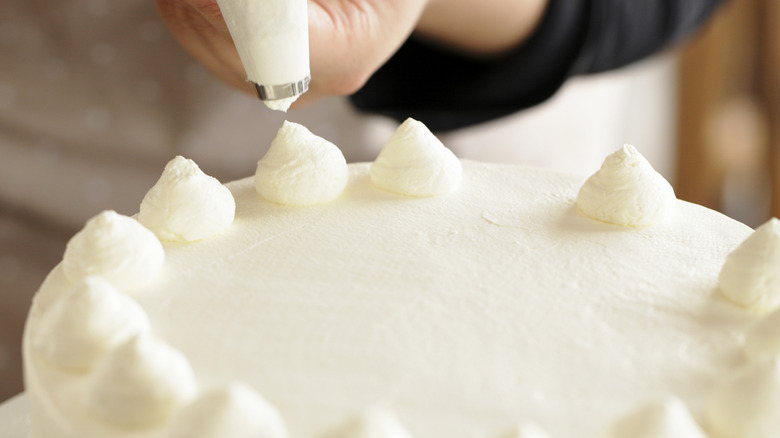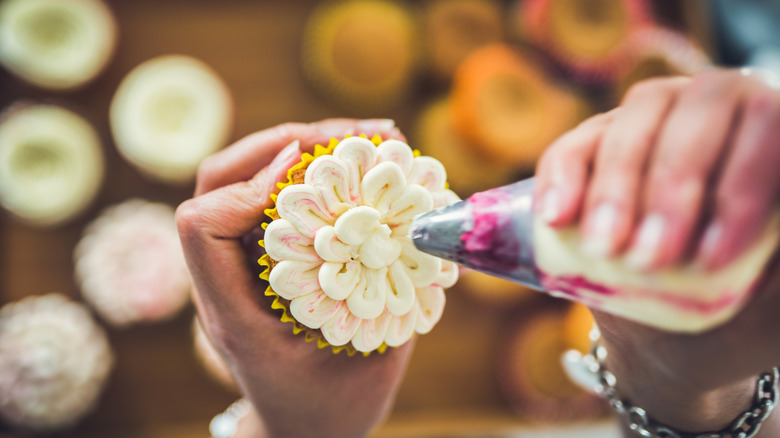If Your Piping Bag's Icing Is Too Firm, Here's How To Quickly Soften It
We may receive a commission on purchases made from links.
Decorating a cake with beautifully crafted buttercream swirls, ganache shells, or Swiss meringue rosettes is arguably the best bit of baking. By simply scooping frosting into a star-tipped piping bag, you're on your way to transforming even the most basic store-bought sponge into a showstopper. Having said that, your frosting needs to be on its game; firm enough to retain its shape once piped but soft enough to flow through your piping nozzle without hindrance. The problem is that many varieties of frosting can stiffen up in cooler conditions as ingredients like butter and chocolate begin to set in your prepped piping bag. We spoke to cake expert Leanne Tran, who leads a six-person, all-female pastry chef team at Le Crocodile, and Bar Blondeau at the Wythe Hotel, who told us that a bowl of warm water is sufficient to soften stiff icing at speed.
"If the [piping] bag is fully sealed and closed, you can place it into a container of warm water for 5 minutes," Tran explains, continuing, "dry it off, and then give it a few squeezes to make sure it's evenly softened and the same temperature and consistency throughout."
This nifty trick works so well because the water gently warms the icing via heat transfer, making its texture softer. Ensuring the piping bag is sealed prevents any liquid from getting inside, which could adversely affect the consistency and flavor of your frosting.
Can you microwave stiff frosting in a piping bag?
While you could microwave your filled piping bag for a few seconds, you run the risk of over-heating your frosting and causing it to become runny (disposable microwave-safe piping bags, like those used for softening candy melts, can be bought online, along with plastic piping tips and nozzles). Moreover, a chocolate or cream cheese-based frosting is prone to becoming grainy and splitting in the high heat if left in there for a moment too long. Warming your icing in a gentler fashion in a water bath is a better move because the frosting heats up at a slower rate and is unlikely to split. You can also leave it pretty much unmonitored and just give it a squeeze once you're ready to check if it has reached the right consistency as it sits in the water. The result? Smooth frosting that you can pipe out easily without the need to put extra pressure on the bag with your fingers.
However, if your piping bag is large and the frosting isn't heating through to the center with the water bath method, Leanne Tran says a more extreme remedy may be needed: "When it doubt, take it out of the bag and whisk it." In this case, consider adding a dash of milk to fully soften its consistency. Also, make sure you're taking note of our 15 tips to improve your buttercream frosting to get the best texture before you start decorating.

